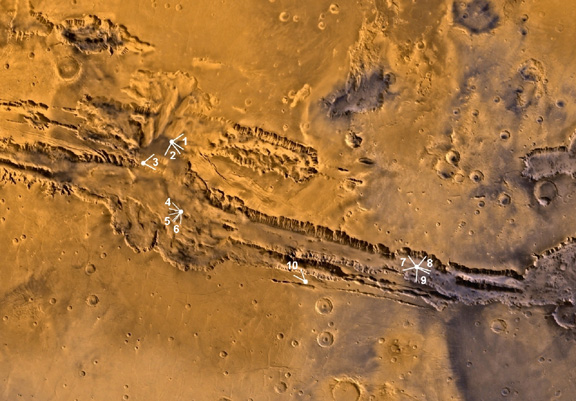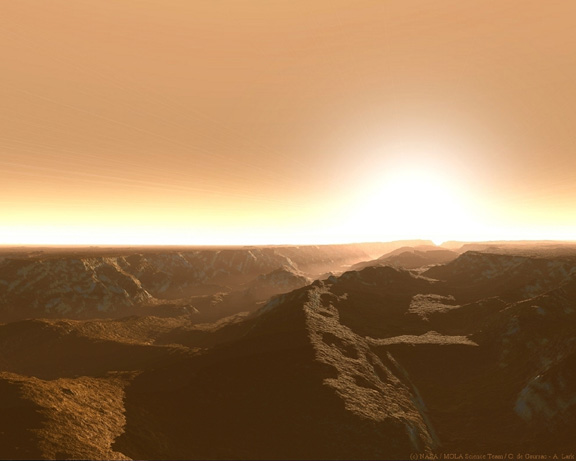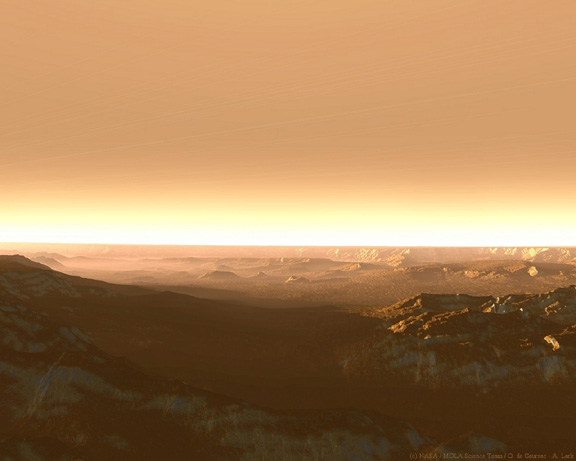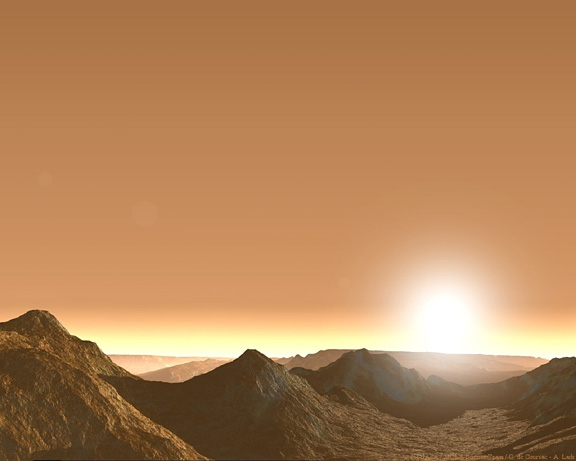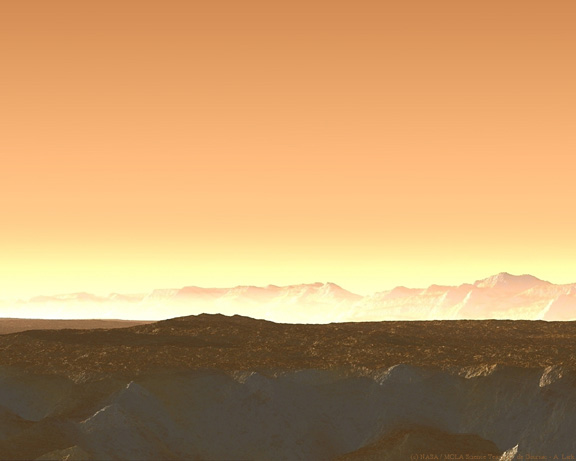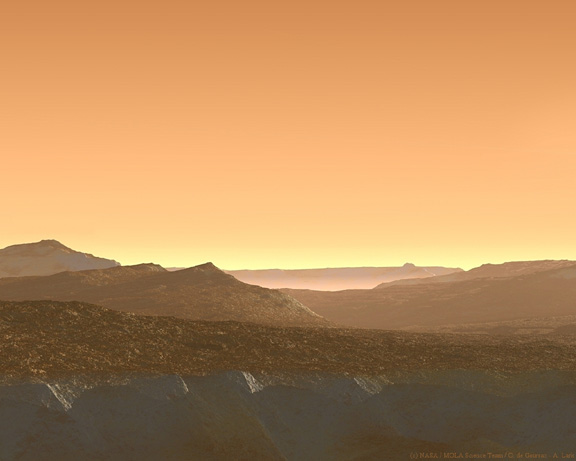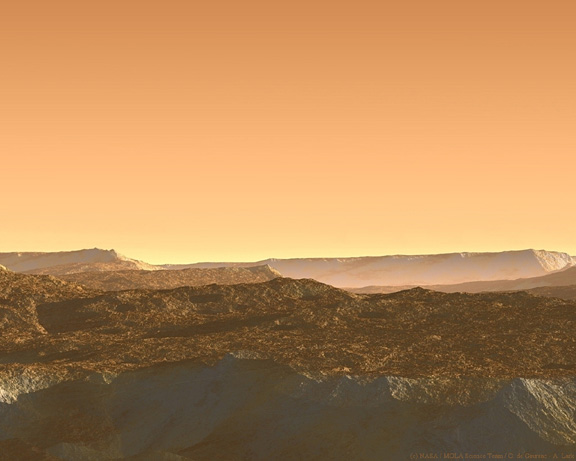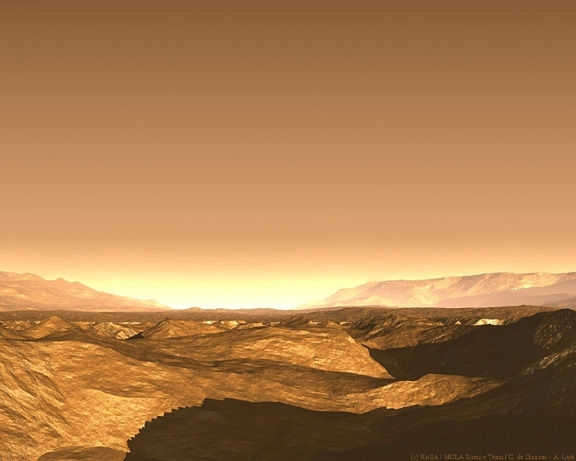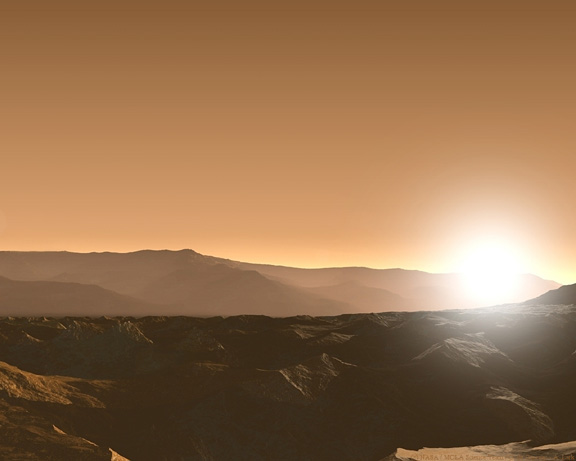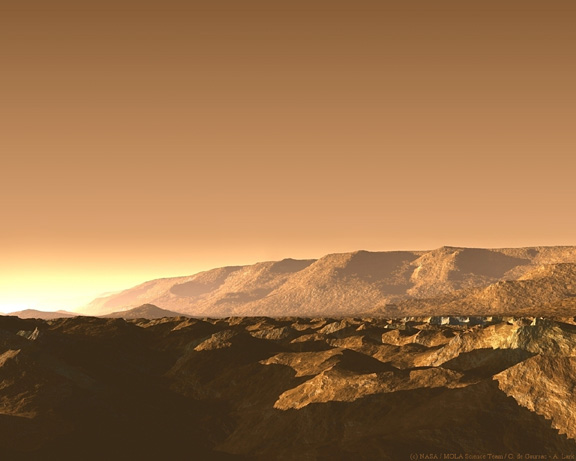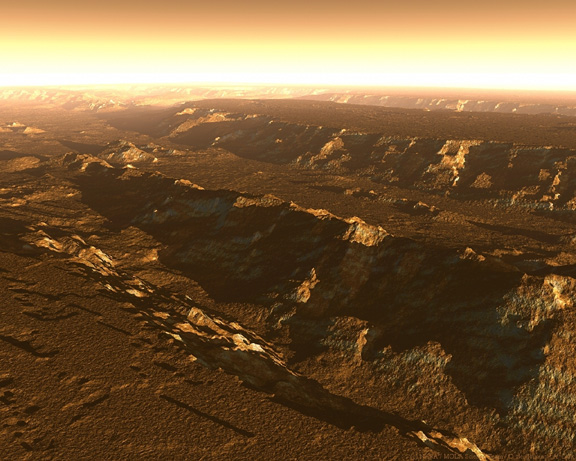Valles Marineris Renders
The renderings of the Valles Marineris below were produced by Olivier de Goursac and Adrian Lark in cooperation with the MOLA Science Team. The renderings are stills from a video that simulates a flyover of Valles Marineris that was premiered at the 2001 meeting of the Mars Society in Paris. The images, while artistic in nature, utilize crossover-corrected MOLA profiles to produce grids interpolated at 600-meter spatial resolution. The images below are at a resolution of 1280x1224 pixels.
An article that discusses the production of the Valles Marineris renderings as well as MOLA's contribution to mapping Mars will be published in the November 24, 2001 issue of Le Figaro - Magazine.
Labeled map of the Valles Marineris canyon system with locations of image renderings shown as yellow dots. (Image Credit: NASA/MOLA Science Team/O. de Goursac-A. Lark)
Map showing the locations and viewing directions of the topographic images below. (Image Credit: NASA/MOLA Science Team/O. de Goursac-A. Lark)
(1) This image depicts a view from above the intersection of Ophir Chasma and Candor Chasma. This view is looking directly to the east, towards a simulated rising sun and across the full length of Ophir Chasma. The canyon terminates more than 300 km from the viewer's vantage point. Some canyon walls from top to bottom to the left are more than 8 km high. (Image credit: NASA/MOLA Science Team/O. de Goursac-A. Lark)
(2) This image is viewed from above the intersection of Ophir Chasma and Candor Chasma. The view is looking directly to east, towards Melas Chasma, at the center of the Valles Marineris. The most distant canyon walls are 350 km away, and appear to fade in the distance. (Image credit: NASA/MOLA Science Team/O. de Goursac-A. Lark).
(3) This image is viewed above the intersection of Candor Chasma (to the left) and Melas Chasma (to the right and hidden from view by local topography). The view is looking directly east, towards the central plateau north of Melas Chasma, and located 150 km away. Only the north wall is visible from this vantage point (Image credit: NASA/MOLA Science Team/O. de Goursac-A. Lark)
(4) This view in this image is as if one is standing at the at the bottom of Melas Chasma, in the center of the Valles Marineris. The view is in a northwestly direction towards Ius Chasma, where the canyon walls appear to fade into the dusty atmosphere. (Image credit: NASA/MOLA Science Team/O. de Goursac-A. Lark)
(5) This image shows a different view from an observer at the bottom of Melas Chasma. Here the view is in a southwestly direction towards distant canyon walls which are 150 km away with a maximum elevation of 9,500 m above the floor of the canyon.
(Image credit: NASA/MOLA Science Team/O. de Goursac-A. Lark)
(6) This image shows another view from the bottom of Melas Chasma. The view is to the south towards distant canyon walls which are 110 km away with the top of the canyon 8,500 m above an observer's vantage point. (Image credit: NASA/MOLA Science Team/O. de Goursac-A. Lark)
(7) The view here is from the deepest part of the Valles Marineris, inside Coprates Chasma, 5,600 m below the zero datum elevation on Mars. The view is to the west and shows the canyon section with its south wall (left) and north wall (right). (Image credit: NASA/MOLA Science Team/O. de Goursac-A. Lark)
(8) This image shows another view from inside Coprates Chasma. The view is to the northeast. The canyon wall left of the sun is 45 km distant and its summit towers 7,900 m above the vantage point. (Image credit: NASA/MOLA Science Team/O. de Goursac-A. Lark)
(9) Here is another view from inside Coprates Chasma. The view is to the northeast. The canyon wall towers more than 7,500 m above the floor. (Image credit: NASA/MOLA Science Team/O. de Goursac-A. Lark)
(10) The final view is from high above the Valles Marineris. In the foregrount towards the northeast stands Melas Chasma, the largest section of the canyon system. The most distant walls, barely visible through the dusty Martian atmosphere, are more than 650 km distant. In the foreground Coprates Chasma extends to the east. (Image credit: NASA/MOLA Science Team/O. de Goursac-A. Lark)
Back to MOLA home
page
Direct inquiries to: dsmith@tharsis.gsfc.nasa.gov


